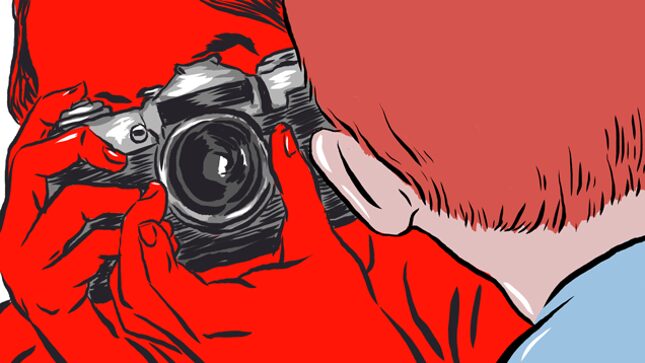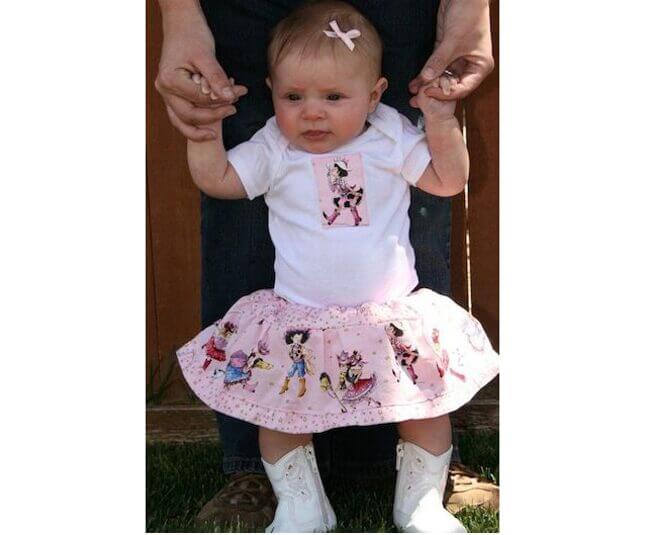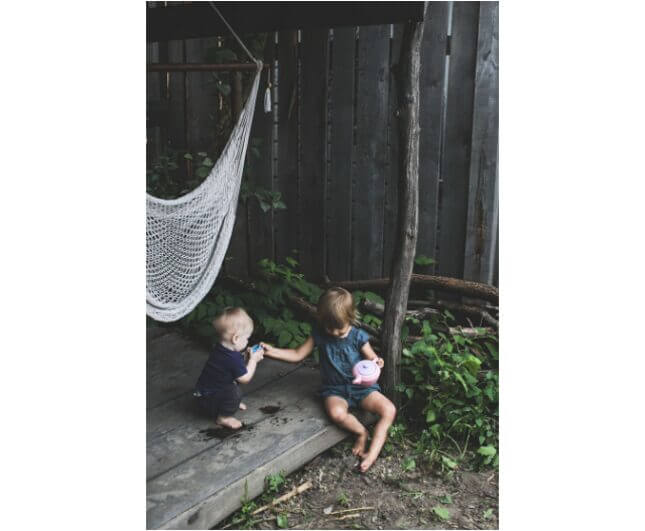What Are You Really Looking For in Other People's Baby Photos?
Latest

Remember Unbaby.me, a Chrome plugin that replaced photos of babies in your Facebook feed with photos of cats? When it launched in 2012, it was briefly a viral hit, racking up the likes, although it no longer exists today—probably owing to most people getting hip to Facebook’s “unsubscribe” option. Unbaby.me is a bit of an archeological relic of our Facebook past. A collective baby-photos saturation point had been reached, and a the populace needed to push back against the growing hegemonic presence of hetero family messaging. New parents were going on photo-posting sprees back in the early 2010s. No brakes! Twelve consecutive shots of your baby eating solid food for the first time? Sure, no problem. Daily photos of your baby toddling outside your apartment building, the only evident variation being the baby’s outerwear, depending on the weather? Circa 2010, that was not considered excessive or in poor taste.
In 2010, I think most of us were playing around more with the fun of sharing. We were, maybe, s a bit more ingenuous, a bit more sincere, less likely to cast an exacting editorial eye on our sharing choices. The change in our approach isn’t due to some tragic fall from grace. It’s just that we’ve all spent the past 10 years learning to be social media storytellers, and we’re getting more sophisticated at it. We’ve consumed a lot of media in the last five years, and it’s changed us.
Today, I observe a different habit among parents posting photos of their kids on Facebook and Instagram. The photos are fewer in number, but meant to communicate more information. Styling—and I think it’s not an exaggeration to call it that, even if we’re just talking about getting a kid to stand still in a particular place—is more evident now.
Parents have fundamentally good intentions when sharing photos of their kids on social media: Love, pride, a desire to keep far-flung friends and family in the loop. I don’t often share photos of my two kids—that’s more my husband’s grind—but I’m not about to make my family look bad when I do. But there are many shades of meaning beneath these good intentions. The way photos are read, and the messages people receive from them, say a lot about the anxieties and priorities of our time; the subtext is almost always class, by which I mainly mean leisure. A photo of a baby is in one light just a photo of a baby; in another, it represents where, how and with whom you spend your family time. Whether baby is shellacking his face with homemade veggie puree or going out for a stroll strapped to dad in the Bjorn, there is a lot more going on in most photos today than chubby cheeks.
To test this idea, I showed a group of people—parents and not-parents—two photos of kids that I found on Pinterest. I asked them what their reaction would be if these photos appeared in their feeds, and I asked them to describe what they think the people posting the photos are trying to communicate.
PHOTO 1:

Every single parent I spoke to said they had a “positive” reaction to this photo. There might have been a lack of enthusiasm—Mario said it looked to him like the kid’s parents were trying to hustle baby-cowgirl outfits (which they were; the photo is from an Etsy store)—but all agreed that a photo of a baby is never a bad thing. “I have kids. I like kids. I post my own kids’ pics all the time, especially when they’re wearing something cute that isn’t grimy, for a change. I get it,” replied Autumn.
The respondents without kids, however, were less charitable. Every single person without kids who reacted to this picture had either a muted positive response (“IDK, if I saw this in my feed I probably wouldn’t even notice”) to full negative (“IMHO this one isn’t that cute”). Patrick wrote, “The cowgirl outfit ‘combination’ is annoying. Putting some precious outfit on a kid says to me there is a vicarious motivation. The friend may be saying, ‘Hey look at this thing I am too self-conscious to dress up in, isn’t it cute? Please validate me!’”
But this photo didn’t elicit especially personal feelings because it doesn’t contain much information about the parents—it’s just a baby. Parents were more sympathetic to the baby-for-baby’s sake image, and non-parents were generally pretty unmoved, and focused on the baby’s outfit because it was the only source of contextual information.
The second photo I shared with the group represented a more of what I consider the contemporary, more meaning-laden style of kid photo. Again, parents tended to admire the photo, but both parents and non-parents identified signs of class as an important component of this shot.
PHOTO 2:

Gemma wrote: “Just ugh. I feel like I’m being manipulated into buying into someone’s curated-for-Instagram life. It feels designed to make viewers envious of the photographer. It’s kind of saying, ‘See, my life has meaning AND beauty.’ Also, the kids are like props there, rather than in the other one, which is focused on a person/personality. It’s like the kids are a status symbol.’”
Almost every respondent identified wealth or privilege being communicated through this photo, whether because the photo appears to take place in an urban backyard, which represents a degree of wealth, because of the type of camera you’d need to get an image of that quality, or because of how it’s styled—“like an Anthropologie for kids ad,” as Tammy put it.
When I asked parents to reflect on their own intentions when sharing photos of their kids, many of them expressed the hope that if other people don’t like their photos, they’ll just ignore them. Caitlin wrote, “When I post pictures of my son I basically think he’s so darn cute I want to scream it to the world through images. Sometimes I have to tell myself to stop showing everyone photos, but I figure if they get sick of my postings they won’t look.”
Mario wrote, “When I post photos, I usually like for people to laugh, so they tend to be funny. If it’s not a humorous photo, it is probably a nice picture of the girls, just to keep friends aware that things are going well in my world. Having said that, I never want to enter the humblebrag territory, so that is why I don’t post photos often, and the posts are usually without text.”
Humblebrag territory: This is where, I believe, the big schism between the reactions of parents and non-parents comes from. As we did with cascading baby photos, we may have hit peak humblebrag on social media around 2012. That year, the late comic writer Harris Wittels published Humblebrag: The Art of False Modesty, based on his popular @humblebrag Twitter feed that retweeted flagrant acts of humblebragging. Around that time, social media users became hyper-sensitized to acts of humblebraggadocio. The humblebrag became an enshrined social media taboo.
But I’d argue that photos of kids are a white flag under which parents can continue to humblebrag with impunity. When someone posts a photo of a secluded beach, it’s a lifestyle brag—not an egregious one, but a brag nonetheless. It’s an accepted practice on social media today to good-naturedly (or not—you can’t always tell!) call someone out for their braggy vacation pics. It’s not uncommon to find a “Fuck you dude!” in the comments below an album of vacation pics.
It would be pretty awkward if, in the comments below a no-less-braggy shot of a Petit Bateau-clad child playing in a sun-dappled backyard, someone dropped a “Fuck you dude!” People may have that reaction—they absolutely do, if my survey results are any indication—but children are considered off-limits when it comes to commenting on privilege and status on social media. Parents claim immunity to conventions surrounding those messages. “It’s just a photo of Ava I thought was nice! What is WRONG with you?” But that photo of Ava is still a message of class and values, a the kid the reflection of what they see of themselves. Lovingly composed kid photos like the one above represent a loophole in humblebrag law, one that is not available to people who don’t have kids. Parents are able to continue flouting this law while people with no kids are bound by it.
And then there’s the humblebrags themselves—what they’re trying to communicate. Never before have the stakes of parenting seemed so high. In Robert Putnam’s recent book Our Kids, he laments the growing opportunity gap between kids born into privilege and kids born into the working class. The cost of being born poor today, he writes, is too often insurmountable. Middle class parents know this instinctively, and if they don’t, the overnight lineups for good preschool spots are all the proof they need.
Putnam writes:
Parents from all social backgrounds nowadays invest both more money and more time in raising their kids than was true a generation ago… Parents in all classes have been cutting back elsewhere to focus their resources on their kids, but because affluent, educated families have not only more money but also more time (because they typically split child care between two parents), they have been able to increase their investments much faster than poor parents (usually single moms). As a result, the class gap in kids has become wider and wider… These differences in parental investment, in turn, are strong predictors of children’s cognitive development.
The parent who posts the kid-photo-as-humblebrag is like the duck furiously paddling its feet while appearing to drift along calmly. People don’t usually share photos of their kids staring at their iPads, or eating cereal for dinner because mom or dad didn’t have time to stop for groceries after work. What they want to represent is time and attention spent on their kids—emotional bandwidth —which in America today is usually an analog to class.
Cheerful, whimsical photos of kids on social media are representations, in this way, of money. They represent stacks of bills. These parents are spending time with their kids, giving them their full attention (at least when they’re not checking their notifications for likes on the photo of their kid they just posted). Financial resources are being mobilized in support of these kids. Most people haven’t read Our Kids, but the type of data Putnam cites has been trickling into the groundwater for years. Most American parents have an instinctive awareness that the more time you spend engaging with your kids, the better chances they will have to succeed, socially or financially. It’s no surprise that the imagery we generate on social platforms demonstrates our hyper-sensitivity to the importance of doing right by our kids.
Most of us have been using social media now for over 10 years. Our attitudes and expectations have evolved. I like to think of our social media maturation as a kind of collective adolescence. Remember when you were a teen, and you’d think back to something you’d said or done like six months previously, and the immaturity of it—how unspeakably lame you were six months ago — would make you full-body cringe? Up until like, a year ago, that’s how I felt about my social media use. I can’t bear to look back at my timeline to 2007—what was I thinking? I wonder what we’ll think of our kid photos 10 years from now. How will we read them then?
Kathryn Jezer-Morton is a writer and editor in Montreal. She writes about motherhood atYou’re Mom Dot Com.
Illustration by Jim Cooke. Images via Sew Sweet Finery at Etsy, Audre Rae Photography